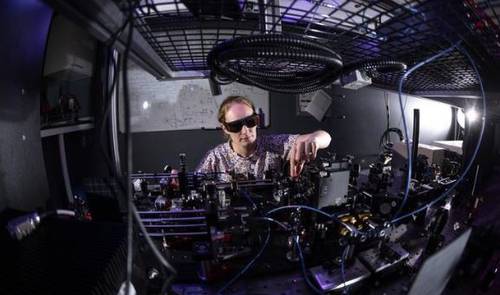A group of international researchers have made a groundbreaking discovery by successfully storing and retrieving quantum information for the first time, marking a crucial step forward in the field of quantum physics. Sharing quantum information is vital for developing networks for distributed computing and secure communication, which will be critical in solving complex problems such as optimizing financial risk and designing molecules.
One of the significant challenges in building quantum networks is maintaining the integrity of quantum information over long distances. To overcome this challenge, researchers propose dividing the network into smaller segments and linking them with shared quantum states. This requires a quantum memory device to store and retrieve the data, which was accomplished by the research team using regular optical fibers to transmit the data.
The researchers from institutions such as Imperial College London and universities in Germany successfully connected the key components of quantum networking for the first time. This milestone opens up possibilities for long-distance connection between locations and quantum computers, which is essential for future quantum networks.
In traditional telecommunications, repeaters are used to amplify signals over long distances to ensure they reach their destination intact. However, classical repeaters cannot be used with quantum information as any attempt to read or copy it would destroy it. Quantum networks overcome this barrier by sharing entangled photons, which are linked in a way that one cannot be understood without the other.
By creating a system where devices producing and storing quantum information operate at the same wavelength, the research team was able to efficiently interconnect these components. The system utilized a quantum dot to produce non-entangled photons, which were then stored using a cloud of rubidium atoms.
While standalone quantum dots and memories have been developed previously, this achievement marks the first successful demonstration of interconnecting these devices at telecommunications wavelengths. The team plans to further improve the system by enhancing photon storage time and reducing its size, representing a significant advancement in the field of quantum networking.
This breakthrough has immense implications for industries that require high-speed computing power or secure communication channels. With further development, we can expect more efficient use of resources and improved performance in various fields such as finance, medicine, energy management, etc., leading to better decision-making processes worldwide.



